A country house is the dream of any city family, and today many people can afford this pleasure. In this case, we are not talking about a banal dacha, which is adapted only for summer vacations, but about a real winter dwelling. You can also leave aside and elite cottages, whose share in suburban construction, despite the huge number of advertising brochures, is rather scanty. We are talking about the so-called budget developers who save literally every penny, and are not able to afford the highest quality materials, but at the same time they are trying to build a house that would not require excessive heating costs during winter operation.
The huge capacities of the construction industry today are aimed at providing the suburban segment of this market. Especially for "state employees", "light" types of concrete were invented, which, according to manufacturers, are capable of providing high quality of inexpensive buildings. The range of insulation materials, as well as waterproofing materials, has greatly expanded, which to some extent can also contribute to the heat saving of a low-rise building. As you can see from the statistics, the most popular for the construction of walls for private houses are aerated concrete and foam concrete blocks, which are much cheaper than bricks, and with proper insulation of concrete facades, they can compete with it. However, as practice shows, the costs of heating any buildings today are very high, even for those made of wood using frame technology.
Private house problems
So, the problem of economical heating of private suburban dwellings in our country is very acute, especially in regions with a cold climate, where frosts of up to 30 degrees are not uncommon. On such days, the heating works with might and main, absorbing significant funds. Of course, wealthy homeowners are not afraid of such expenses, but, as we said, these are less than 10% of all the rest.The need to pay large sums for fuel (gas, electricity, coal, or whatever) imposes a heavy burden on the bulk of "state employees", which very often greatly poisons life in a country house, does not allow you to truly enjoy coziness and comfort.
But there is a category of people who cope with this problem quite successfully, attracting the forces of nature to their service. And although they are not particularly well versed in the physics of natural phenomena and the chemistry of substances, they are perfectly able to communicate with their neighbors and construction specialists who know all sorts of secrets of free heating and insulation at home. We are, of course, not talking about special tools with low payback, such as solar panels or wind turbines, although they, of course, can also be used in common business. We will tell you about several "old-fashioned" and more modern techniques with which you can reduce heating costs by 70%, if you approach the matter thoroughly and wisely.
The sun is like a heater
But still, the main option is to heat the premises directly by the sun's rays. To do this, you just need to put large windows with reinforced double-glazed windows on the south side of the house. Reinforced they are needed so that at night the heat does not go outside through the windows. Of course, such double-glazed windows are not so cheap - you will have to pay a tidy sum for them. But this money will be recouped in the very first winter, and in the future this option will begin to bring considerable income, consisting in fuel economy. Sunlight should fall on objects that have a high heat capacity and are colored dark. For example, if you put a small cast-iron figurine in front of the window, and direct sunlight will fall on it all day, then by sunset it will be so hot that it will simply be impossible to pick it up. If you leave it overnight in a small unheated room, then the heat from this figurine will not allow the temperature to drop significantly in the room until morning. Of course, everything here depends on the mass of the object to be heated, but there are no special problems with this, because the solar energy is dimensionless, you can also heat a brick partition painted in dark colors, which is located in the room in front of the window. Such a partition will accumulate in itself as much heat as it penetrates through the window, it is for this window that more needs to be done.
We use the veranda
A veranda is often an indispensable attribute of any country house. On the veranda in the summer, you can perfectly relax, dine, move the summer kitchen there, even sleep on it on stuffy nights. But many homeowners are using the veranda incorrectly. They place it on the sunny side of the house, and then it turns out that in the summer it is impossible to be on such a veranda due to the heat. And in winter, when it is glazed, the temperature in this room, although it is higher than outside, does not contribute to the heat saving of the house, since the bulk of the cold passes through the rear, northern wall, which is not illuminated by the sun even on the clearest days. And when the north wind blows, the heat is blown out of the wall almost without interruption. Therefore, the veranda should be placed along this wall - in winter it will perfectly protect the walls from wind, moisture and freezing, and in summer it will be cool and comfortable on it.
You should also pay attention to the roof, because a lot of heat also goes out through it. In the case of an unheated attic, this is quite easy to do - you need to insulate the floors well and seal them with waterproofing material. But what to do if the attic is inhabited, because the gentle slopes of the attic are not so easy to insulate - it is possible to create the most airtight carpet from the same mineral wool on the floor. And by laying it under the slopes between the rafters, it will not be possible to tightly strengthen the insulation, there will always be gaps between the plates or rolls, through which warm air will surely find its way out. To prevent this from happening, it is enough to take ordinary aluminum foil and glue all the slopes and walls with it, especially you need to try in the corners where the most significant heat leaks occur. Foil does not absorb heat, but literally reflects it from itself, preventing leaks, this is the property of this material, which for some reason even today is used in a very small volume, and then mainly in industry, and not in suburban housing construction.
We fill the underground with slag
Never line up in the hills
Of course, these are far from all the "tricks" with which you can heat a house for free and insulate it reliably. There are many more nuances that some savvy homeowners use very widely.But even if you take into account all of the above and skillfully apply these methods in the construction and arrangement of your suburban housing, you can save more than half of all the money spent on heating that your neighbors spend.

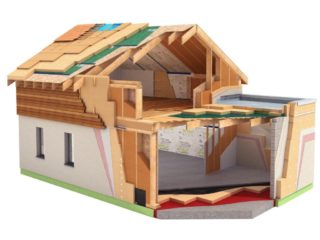
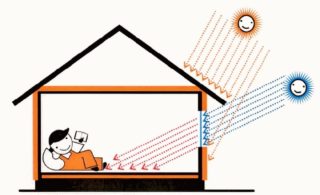
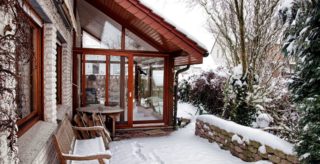
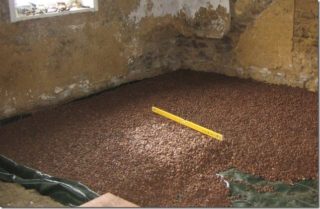
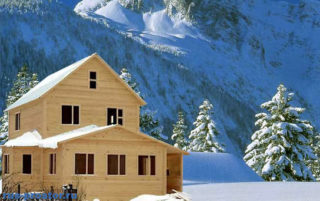







A frame house with insulation - straw blocks, and now ready-made panels are the best option. The thicker the walls, the less heating energy is required. I checked in practice: House of 100 sq. meters was quietly heated by infrared heaters with a total power of 5 kW. Moreover, in the bedrooms, the heaters did not work during the day. The thickness of the walls on the first floor was -1 m, and on the second - 0.5 m.